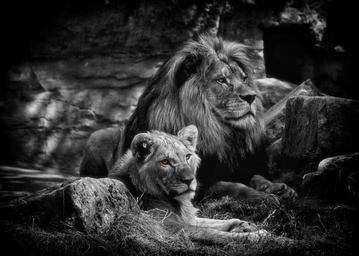Introduction
In an era where self-expression is not just encouraged but celebrated, the art of emotional self-portraiture has taken a prominent place in both photography and decor. The fusion of aesthetic photos wall, artistic home decor, and personal narrative photography creates spaces that reflect not only who we are but also how we feel. This article explores the profound relationship between identity and aesthetic decor, delving into techniques for capturing one's essence through visual storytelling and design.
What does it mean to capture identity through aesthetic decor? It's a journey of curating personal sanctuary through wall art placement, combining colors and textures, and transforming environments that resonate with our innermost selves. By blending modern and traditional styles, we can create inviting spaces that speak volumes about our personality.
So, grab your favorite drink and let's dive deep into this exploration of emotional self-portraiture.

Emotional Self-Portraiture: Capturing Identity Through Aesthetic Decor
Understanding Emotional Self-Portraiture
Emotional self-portraiture is more than just taking photographs; it’s about creating a visual representation of one's inner world. It involves:
- Self-reflection: Using self-portraits as a mirror to explore identity. Artistic experimentation: Trying out different styles such as abstract or realism in portraits. Contemplative photography: Capturing moments that evoke feelings or thoughts.
This form of expression allows individuals to communicate their emotions visually, providing insight into their psyche while enhancing personal spaces with art.
The Role of Aesthetic Decor in Identity Exploration
How does decor influence our perception of identity?
Decor plays an integral role in shaping our identities. Aesthetic photos wall can be tailored to reflect individual journeys, interests, and emotions. Personal spaces adorned with custom artwork or family photos make statements about who we are—our passions, experiences, and memories.
Creating Inviting Spaces Through Art
A well-decorated space can significantly affect mood creation in spaces. When designing these environments:
Select meaningful artwork: Choose pieces that resonate emotionally. Utilize colors wisely: Different hues evoke different feelings—warm tones add energy while cooler shades provide tranquility. Incorporate textures: Combining fabrics like velvet with wood adds depth to your decor.By paying attention to these details, one can create an environment that nurtures creativity and comfort.
Visual Storytelling in Design
Visual storytelling transcends mere decoration; it's about narrating a story through design elements like:

- Wall art placement Color schemes Furniture arrangement
Each piece serves as a chapter in your life’s narrative—an https://rentry.co/9wc34tdq embodiment of experiences captured through fine art self-portraits or aesthetic colorful portrait photography.
Techniques for Capturing Identity in Portraits
Self-Portrait Photography: An Artistic Journey
Photographers often embark on a journey of self-discovery as they create self-portraits. Techniques such as:
Lighting in portraiture: Understanding how light affects mood. Portrait composition techniques: Framing the subject effectively. Abstract vs realism in portraits: Choosing styles that best represent your essence.These methods help encapsulate not just physical appearance but emotional depth too.
Exploring Early Self-Portraiture in Painting
Long before cameras existed, artists expressed their identities through painting. Early self-portraiture set the groundwork for today's practices by emphasizing:

- Symbolism Individual expression Exploration of identity
This historical context enriches contemporary practices by connecting us to the artistic lineage that values introspection.
Modern Trends in Self-Portraiture
Current Trends in Emotional Self-Portraiture
The evolution of technology has brought forth modern trends such as:
Digital and film self-portraits Faceless self-portraits Artistic experimentation using mixed mediaThese trends allow for greater flexibility and innovation—giving artists new avenues to express themselves deeply.
Technological Impact on Photography
Technology has reshaped how we capture ourselves; smartphones equipped with high-quality cameras have democratized photography making it accessible to everyone:
Benefits include:
- Ease of sharing on social media platforms Enhanced editing tools Opportunities for immediate feedback
This shift invites more people into the realm of artistic self-expression through decor and photography.
Creating Balance in Design Elements
Importance of Balance for Mood Creation
When decorating personal spaces with art, balance is key to creating inviting spaces:
Symmetry vs asymmetry Color balance Texture distributionFinding harmony ensures that each element complements rather than overwhelms others—contributing positively to overall mood creation in spaces.
Curating Your Personal Sanctuary
Curating a space involves thoughtful selection from various components including furniture style (modern vs traditional), wall colors, and artworks:
Tips for curating:
Define your style Choose pieces that tell your story Keep evolving with timeYour personal sanctuary should be dynamic—a reflection of your journey!
Symbolism in Self-Portraits
Understanding Symbolism's Role
Symbolism adds layers of meaning to emotional self-portraiture by incorporating elements that convey messages beyond the literal interpretation:
For instance:
- Colors may represent specific emotions (red for passion) Objects might signify milestones (books representing knowledge)
Recognizing these symbols transforms simple portraits into powerful stories reflecting one’s identity exploration through art.
Abstract vs Realism: Navigating Styles
Artists often grapple with the choice between abstract vs realism when creating portraits—it boils down to what resonates more personally:
Considerations include:
Emotional impact Intended audience interpretation Personal connection with styleBoth approaches offer unique advantages—abstract might grant more freedom while realism may capture intricate details effectively!
FAQs about Emotional Self-Portraiture
What is emotional self-portraiture?
Emotional self-portraiture refers to capturing one's internal feelings or identity through visual mediums like photography or painting.
How can I use aesthetic photos wall for my space?
Aesthetic photos walls can showcase personal stories or interests by carefully selecting images that resonate emotionally while enhancing decor aesthetics.
What are some large canvas hanging tips?
Ensure proper height placement (eye level) Maintain spacing between multiple canvases Mix shapes/sizes for dynamic arrangementsHow do I achieve balance in my interior design?
Achieving balance involves distributing visual weight evenly across elements like furniture arrangement, color usage, and artwork placement within your space.
Can I combine modern and traditional styles?
Absolutely! Combining modern and traditional styles can create striking contrasts while maintaining harmony when done thoughtfully!
Why is lighting important in portrait photography?
Lighting sets the tone; it influences mood creation directly by highlighting features or casting shadows effectively—affecting overall composition!
Conclusion
In conclusion, emotional self-portraiture allows individuals not only to capture their identities visually but also transform their living environments into expressive sanctuaries filled with meaning—a true testament to how deeply intertwined our surroundings are with our sense of self! By understanding techniques ranging from effective lighting strategies down to symbolism within artworks chosen carefully over time—we empower ourselves creatively! So go ahead—explore this fascinating intersection between identity exploration through art & decorative expression!